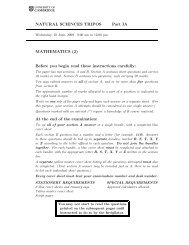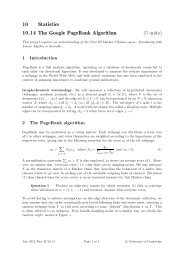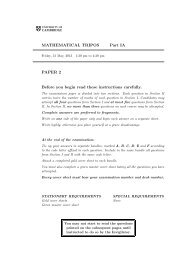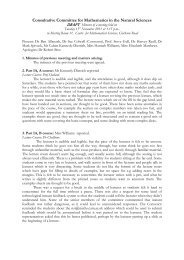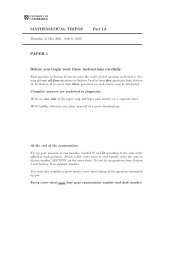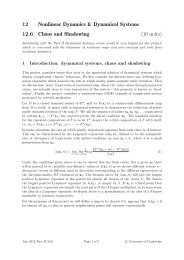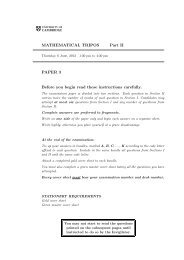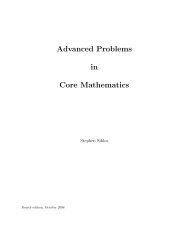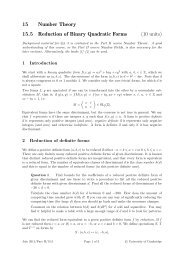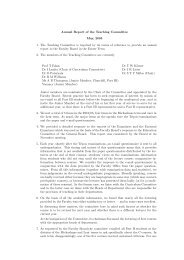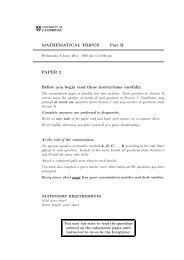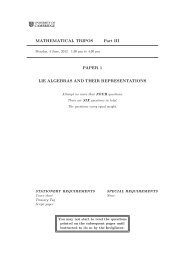MATHEMATICAL TRIPOS Part II PAPER 4 Before you begin read ...
MATHEMATICAL TRIPOS Part II PAPER 4 Before you begin read ...
MATHEMATICAL TRIPOS Part II PAPER 4 Before you begin read ...
- No tags were found...
Create successful ePaper yourself
Turn your PDF publications into a flip-book with our unique Google optimized e-Paper software.
5<br />
10E Cosmology<br />
The number density of a species ⋆ of non-relativistic particles of mass m, in<br />
equilibrium at temperature T and chemical potential µ, is<br />
n ⋆ = g ⋆<br />
( 2πmkT<br />
h 2 ) 3/2<br />
e (µ−mc2 )/kT ,<br />
where g ⋆ is the spin degeneracy. During primordial nucleosynthesis, deuterium, D, forms<br />
through the nuclear reaction<br />
p + n ↔ D ,<br />
where p and n are non-relativistic protons and neutrons.<br />
between the chemical potentials in equilibrium.<br />
Write down the relationship<br />
Using the fact that g D = 4, and explaining the approximations <strong>you</strong> make, show that<br />
(<br />
n D h<br />
2<br />
) 3/2 ( )<br />
BD<br />
≈<br />
exp ,<br />
n n n p πm p kT<br />
kT<br />
where B D is the deuterium binding energy, i.e. B D = (m n + m p − m D )c 2 .<br />
Let X ⋆ = n ⋆ /n B where n B is the baryon number density of the universe. Using the<br />
fact that n γ ∝ T 3 , show that<br />
( )<br />
X D<br />
∝ T 3/2 BD<br />
η exp ,<br />
X n X p kT<br />
where η is the baryon asymmetry parameter<br />
η = n B<br />
n γ<br />
.<br />
Briefly explain why primordial deuterium does not form until temperatures well below<br />
kT ∼ B D .<br />
<strong>Part</strong> <strong>II</strong>, Paper 4<br />
[TURN OVER



